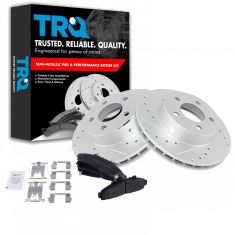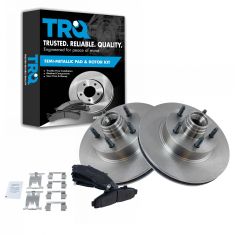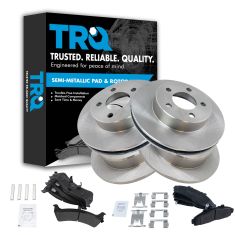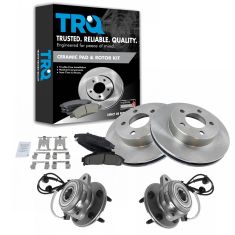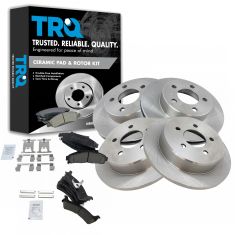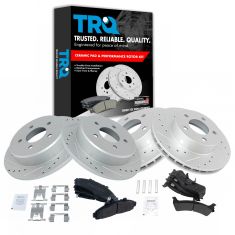1ABFS00004-Ford Mazda Mercury Front Semi-Metallic Brake Pad & Rotor Kit TRQ BKA10488
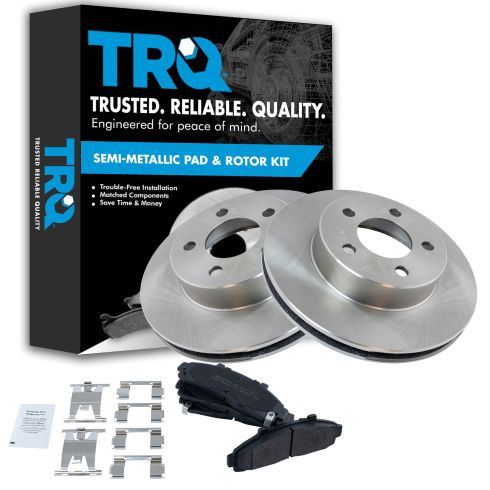
Replaces
2000 Ford Explorer 4 Wheel Drive Front Semi-Metallic Brake Pad & Rotor Kit TRQ BKA10488

You may also like
Product Reviews
Loading reviews
4.82/ 5.0
11
11 reviews
Great Desl
July 8, 2017
They were an exceptional deal for price. That deal couldn't have been bettered. As for quality they seem to be ok but only time will tell. I should have the chance to write a review when they wear out to see how long they last haha. Putting them on at 160k so will see how it goes.
New front rotors & pads
August 14, 2017
Perfect fit, timely delivery, but after only 3 weeks on my Ford Ranger the brakes seem to growl at intersections and at stops. Braking is fine but noisy in side-by-side traffic causing other motorists to glance over as I'm repositioning or creeping forward.
Awesome Set!
October 25, 2018
These brake rotors were brand new and nice and shiny! The brake pads were in tip top shape and went on great!
Great quality and even better price
October 25, 2018
Received the parts on time and were an exact fit. Great price for this and so far has been excellent quality with no issues. Would highly recommend to anyone!
October 30, 2018
I-was-well-pleased-with-the-parts-that-I-ordered,and-was-very-impressed-with-their-quality-and-the-speed-with-which-they-delivered.
jerry-harris
Front brakes and rotor replace
August 26, 2020
The video was Very helpful. The parts fit correctly and rep are went exactly as shown.
Perfect fit
May 9, 2021
Everything fit perfectly, I no longer have to deal with my warped rotors.
Awesome
August 24, 2022
Awesomeness
Perfect fit at an affordable price
August 25, 2023
Perfect fit for my '98 Ranger. Quality appears to be good.
October 21, 2023
Perfect fit right out of the box. Helpful install Visio too. 2 thumbs up!!
Great Deal on Great Parts
January 2, 2024
All the parts were brand new and fit just like they're supposed to. And they were here on time in 2days. All this at a great price compared to the auto parts stores around here.
Customer Q&A
No questions have been asked about this item.
Ford is a registered trademark of Ford Motor Company. 1A Auto is not affiliated with or sponsored by Ford or Ford Motor Company.
See all trademarks.









